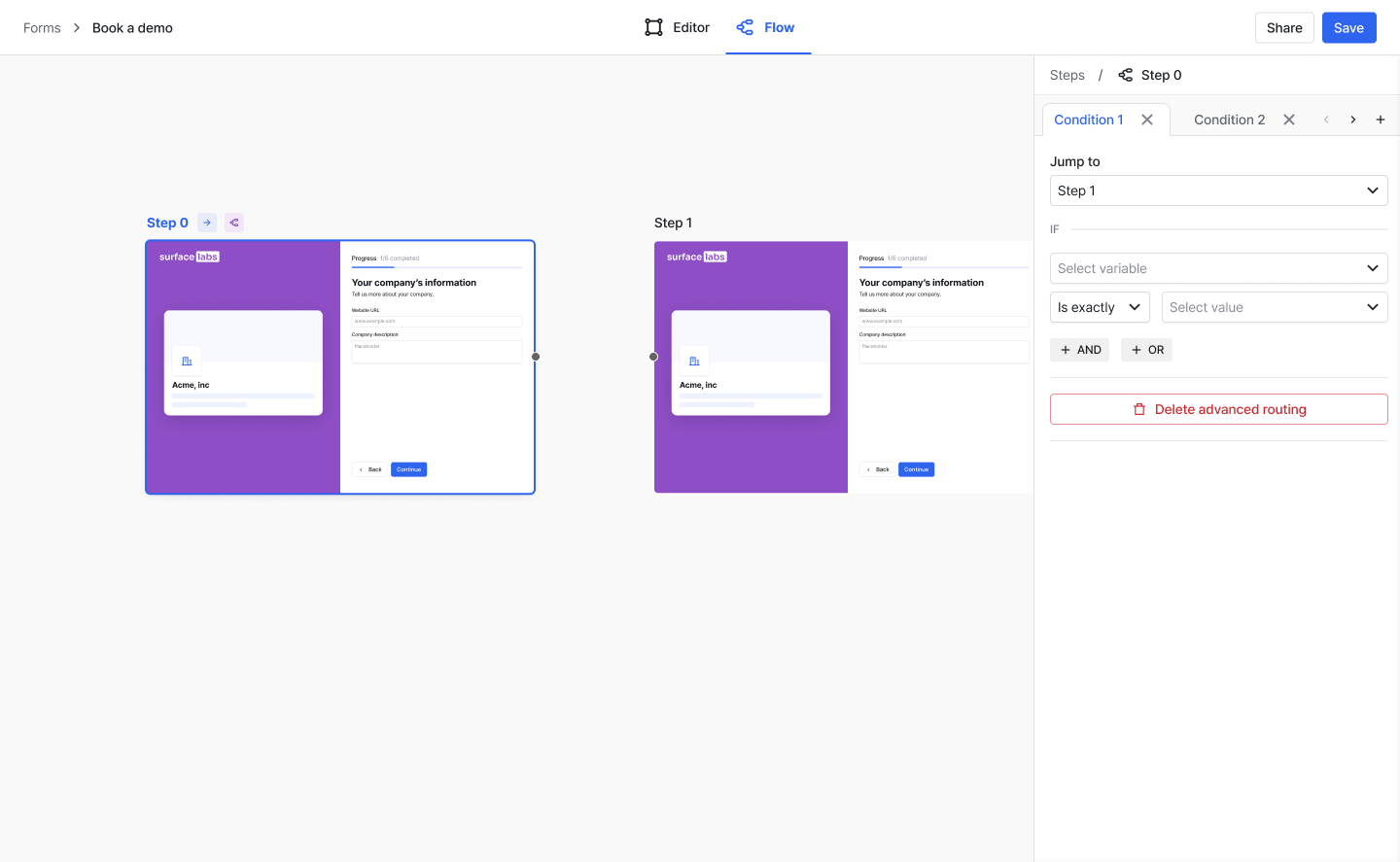Surface Forms
Flow Builder
Create dynamic form flows based on user responses.

Flow Builder
Understanding Flow Mode
When you enter Flow mode, you’ll see:- Visual representation of your form steps
- Connections between steps showing possible paths
- Routing panel for configuring conditions
- Default paths marked as “default”
Setting Up Routing
- Click the “Flow” button in the navigation bar
- Select the step you want to add routing to
- Click ”+” in the Routing panel to add a condition
- Configure your routing logic
- Choose the destination step
Routing Configuration
Basic Routing
Set up simple conditional paths:- Select source step
- Add condition(s)
- Choose destination step
- Set default path for when conditions aren’t met
Available Operators
When creating conditions, you can use these operators:Text Operators
- Equals
- Not equals
- Greater than
- Greater than or equals
- Less than
- Less than or equals
- Contains
- Does not contain
Value Operators
- Text
- Number
- Boolean (T/F)
Condition Types
Field-Based Conditions
Route based on form field values:- Text inputs
- Dropdown selections
- Multiple choice answers
- Checkbox states
- Identity information
Variable-Based Conditions
Use system variables for routing:- Form completion status
- User attributes
- Enriched data
- Custom variables
Managing Multiple Conditions
You can add multiple conditions to a single routing rule:- Click ”+” to add a new condition
- Choose “And” or “Or” logic between conditions
- Configure each condition independently
- Set the destination step for when all conditions are met
